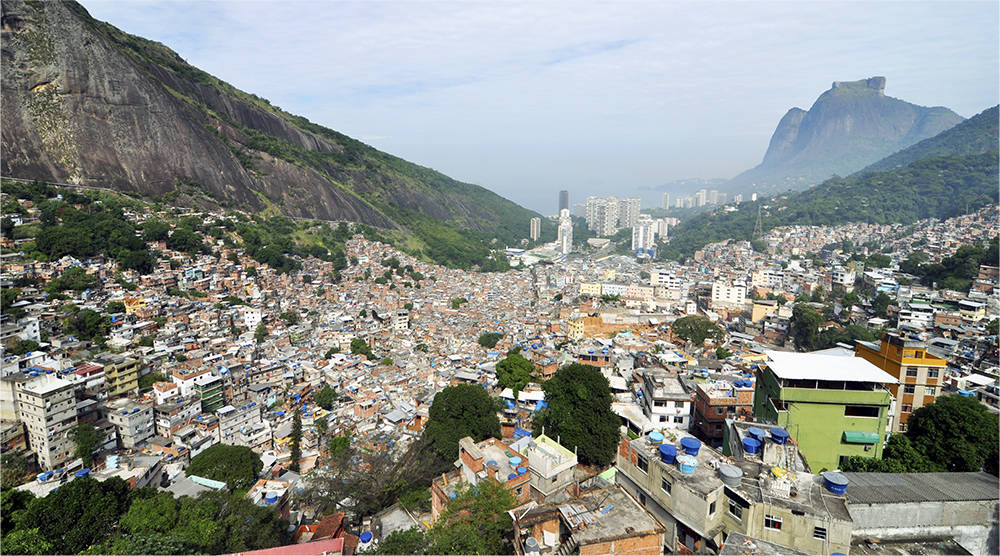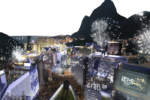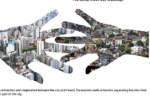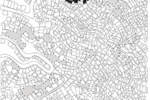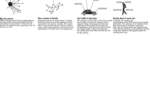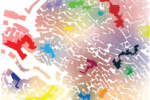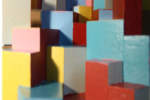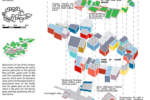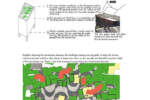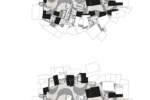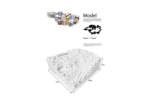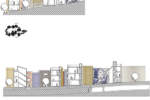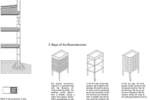architect: Jan Kudlicka
location: Rio de Janeiro, Brasil
year: 2010
After 3 months spent in fall 2010 by research in Rio de Janeiro‘s biggest slum, so called Favela Rocinha, the concept of regeneration became clear. The way of demolition, isolation and also building barriers to make a “city in the city“ was not a good way. So the question was how to preserve the existing impressive structure of dwellings made by local people and improve their living standards so we don‘t have to demolish anything. The urban structure of the Favela is somehow comparable to the old historic centres of today‘s modern capitals. Unfortunately, after the industrial expansion during 19th century and principally after the arrival of car industry in the 20th century, the modern cities started being more and more “slaves“ of the transport. Large roads, highways but also grid of railways or airports definitely changed the scale and the way of urban planning. The unit of time and distance changed as well.
If before, the man did most of his daily movement in certain circle around his domicile, later with the transport this circle has been growing exponentialy. At the beginning the industry, later shopping centers, housings and offices were translated to the city peripheries without respecting the natural human scale. The non-unified urbanism as well as the difficulty of access to these areas, mostly possible only by car transport made a significant difference on the city map: there is always a invisible wall between the historic centre and the suburb. Slums in general could be an experiment how to avoid this evolution and try to do it differently.
Their urban structure is the impressive example of the medieval city with today‘s standards. It‘s like a museum of urban history where we could learn the new ways of how to build a city without any rules but just according to the demand of its habitants. Favela is a well preserved example of very well functional space, some kind of “Utopic Island“, with strong social interactions, where anonymity is a strange word. It‘ s a very good working self-sufficient organism which is very difficult to attack. There is not any main center, any main industrial zone any main shopping mall. Our modern cities are vurnerable because of their centralized spaces.
If one cease to function, the big part of the whole organism, the city, could be in danger. On other site, Slum is like an atomic structure where all the little parts communicate together and cooperate between them. That means, if any of one single unit has a problem, it can be replaced by any other one around. The difference can be also explained with the example of termite mound. To win, it suffice to eliminate the termite queen and the whole community is over. So the concept for the regeneration is based on creation of many small plazas on the empty areas in the Favela Rocinha, where small shops, ambulancies, education centers will take a place. They are so closed one from each other that the distance can be done by walk or on bike. It almost never depass 5 minutes. We also create double zoning in Favela. The ground floor is still the place for transport, work and bussiness. This is the utility zone. But people in Favela also deserve time for a rest, leisure, culture or sports. The creation of the huge “roofplan Park“ will accomodate all these activities and will create the “Fun zone“. A height difference between the houses creates various spaces and dispositions like an open air cinema, playgrounds, theatres, urban gardens and so on. Also the very nice weather almost 365 days a year enable everyday use of these spaces. Its habitants will get impressive views toward the seaside and beautiful mountain sceneries of Rio de Janeiro as well. The last important part is a technical reconstruction of existing dwellings.
Mostly they are done without any professional intervention and could be dangereous to live in.
So to make it as easy as possible, the existing concrete frame will be reinforced by acer beams and the facade will receive new tiles texture, traditionaly used in Brazilian architecture. Also the water, gas and electricity supply will be renewed and could be part of colectors passing threw the community.
Favela Rocinha will function its own way which is maybe different from Rio de Janeiro one, but should be a proud part of it, not an isolated and non-respectable ‘island‘ because there is a lot to learn from as well. And the true and strong argument is without any doubt, that after the survey only 15% of the Favela Rocinha habitants is not satisfied with the life inside. A number much lower than the one from the same survey in Rio de Janeiro. People doing their own bussiness in Rocinha, even if they have already the sufficient founds to leave to Rio, they stay, because they are happy there. Nowadays, almost every house has an internet access, TV, computers and other standards. Buy a house in Rocinha few decades before was something crazy and understandable. Today, the price are growing, the Fast Food brands start to open their bars, as well Bank branches and so on. Hopefully, this amazing urban structure will not pass the same destruction known by many of the contemporary capitals.


